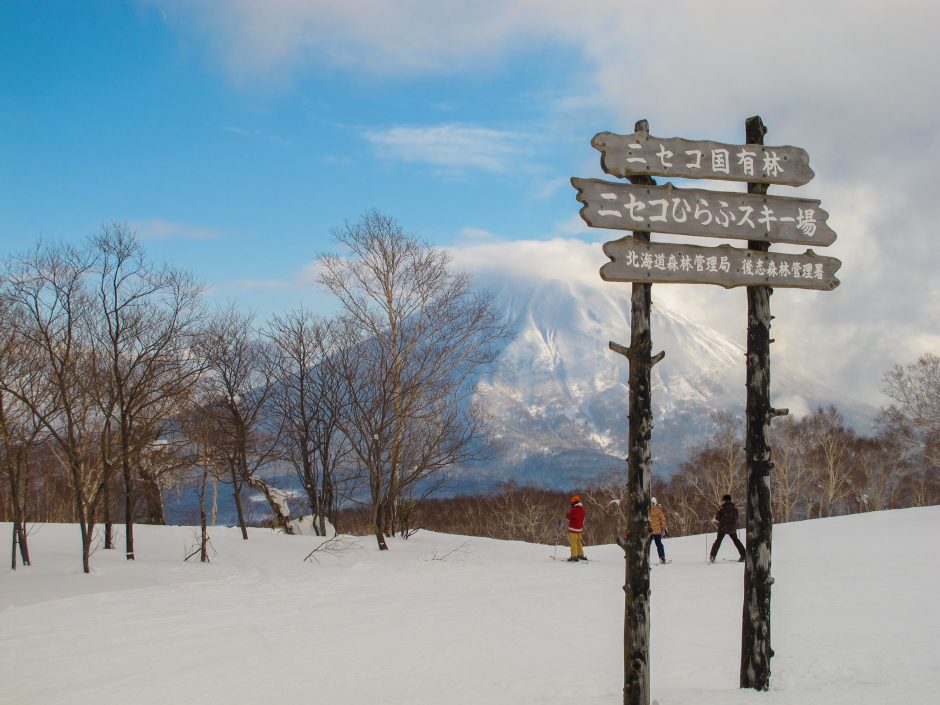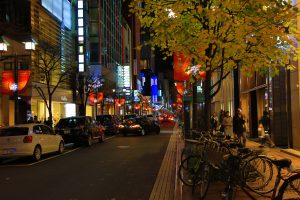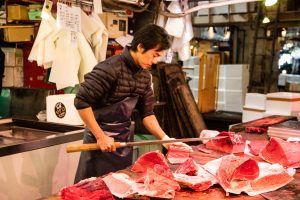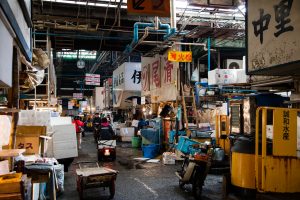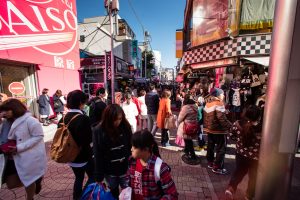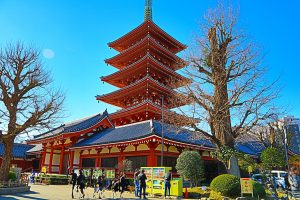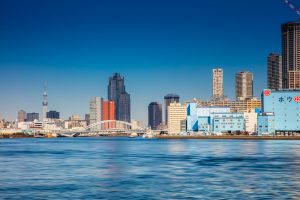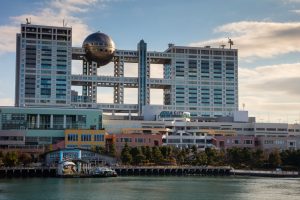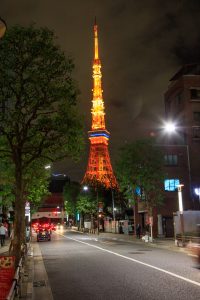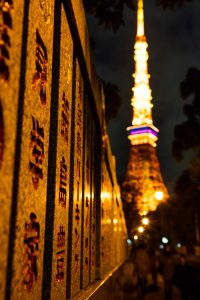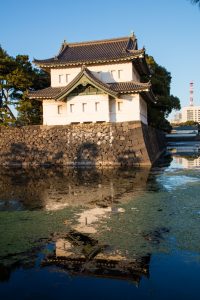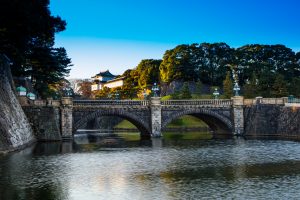Tokyo is Japan’s Capital and the world’s most populated city with over 35 million residents. Yet somehow, they manage their numbers well and unlike many other popular tourist cities, you don’t feel overwhelmed by crowds. In addition to its size, Tokyo is also one of the safest cities in the world with crimes against tourists very rare. You can feel comfortable in walking the streets at night with the lowest per capita crime rate in the world. These are just a couple of the reasons that Japan is considered one of the world’s greatest cities to visit, but there’s plenty more.
Number one is its excellent transport system. Trying to move millions of people around a large city is no mean feat, however the Japan rail system handles the numbers with ease and efficiency. It is also relatively simple to use and well priced so a great way to transport yourself around, particularly if you are a tourist and unfamiliar with area. Shinjuku Station is the largest and most central station with an estimated 3.7 million passengers passing through every day!
As a first time visitor to Japan, the expectation is all about sushi and Geisha girls. Funnily enough however, to spot a Geisha girl in Tokyo city is unusual, you generally need to move further out the more rural regions where the art of Geisha is a time honored tradition. There are certain places in Tokyo city where you can view a Geisha exhibition such as the free show at Asakusa Cultural Centre, however for an authentic experience you are more likely to find them in Kyoto about 3 hours west of Tokyo.
Sushi on the other hand is something that has to be experienced when visiting Japan. Whilst it is a misconception that Sushi is an everyday food in Japanese culture, the sushi that you do find in Tokyo is incredible. It’s as much about the rice as it is the fish and sometimes, not even necessarily fresh fish. There are variations of sushi, such as tuna, that are considered best after certain preparations or aging. Either way, there are so many options for Sushi in Tokyo, from the freshest sashimi at the World Famous Tokyo Fish Markets to the stalls in the undergrounds shopping centers and of course, the sushi bars dotted all around the city. Beware however, many restaurants are very small, only housing a minimal number of diners so it isn’t always a case of “walking in off the street”.
As far as navigating a foreign city, particularly with their written language being characters rather than the alphabetic letters we are familiar with, translating and deciphering signs can be tricky. Luckily, the local Japanese people are extremely helpful and friendly, always keen to offer advice or directions. Many of the young Japanese speak fluent English which helps, although it is always advisable to learn a few basic words and phrases to get you by.
Whilst in Tokyo, hotel options are endless. There is everything from luxury penthouse suites for $20,000 per night to the “capsule” hotels which are literally that, a tiny capsule that is only suitable for a place to sleep at very low prices. One great option if you are looking for an all-round choice is the Shangri La Hotel. Firstly because of their excellent standard and quality but also because it is located directly above Tokyo’s main train station, thereby being a great central location for tourists. It sits on top of an office building so the hotel starts at a high level already meaning every floor has amazing views over the city, none more than the Horizon Club Lounge on the top level of the hotel. Perfect for an afternoon cocktail. If you chose to stay here, it’s highly recommended upgrading to a room with access to this lounge. Well worth the additional cost. The extra level of service at the Shangri La is also second to none.
If you’re looking for ways to fill your days in Tokyo, here are a few of the many great attractions to visit:
Things to Do:-
- Ginza is one of the main shopping regions of Tokyo filled with high end stores, chains like Apple, Zara, etc, bars and luxury brands – the buildings themselves are worth the visit alone, they are stunning. The food hall under Mitsukoshi department store is insanely good. Stock up on food here. Overall Ginza is a great district and even if you don’t spend any money, it’s an interesting people watch and window shop kind of place. It’s also where Shibuya Crossing is located, this is one of the busiest crossings in Tokyo. Similar to Times Square in New York with the color, buildings and people it’s a whole experience in itself.
- Marunouchi Street is located in Tokyo city near Tokyo station and is full of high end, beautiful shops and restaurants. Great for a wander and lots of laneways with lovely quaint little restaurants.
- The Tokyo Fish markets are the worlds largest and busiest fish market. They are absolutely mind blowing. Well known for their live tuna auctions, but make sure you check before you visit as these are very limited in numbers and at times are not open to the public at all. To visit the auctions, you have to be prepared to arrive early, around 4.30 am. The easiest way to arrange a visit is probably via the concierge at your hotel, but don’t stress if you don’t make the auctions, the markets themselves are still worth a visit. They are huge and with all sorts of things on offer in surrounding streets.
- Ramen food stands are located all over the city and they are delicious. As many of the restaurants only have seating for 20 or less people, once they are full, you either have to queue for a long time, or find somewhere else. This makes the Ramen stalls not only quick and easy, but also really cheap. Japan can be quite expensive so cheaper alternatives are good for some meals, although there are also many other exciting and tasty food experiences if you’re happy to be a little adventurous.
- Omotesando is a really pretty avenue lined with Zelkova trees starting at Meiji Shrine all the way down to Omotesando Station. This is also where Takeshita Dori is located. If there is one place you need to go in Tokyo, this street is it. Be warned, its very narrow and probably one of the busiest locations in Tokyo. Home to the Harajuku teenage fashion culture, Takeshita Dora is lined with all the quirky Japanese youth fashion boutiques. It’s an interesting people watch and great place for souvenirs. There are also fantastic market food stalls in the area to sample some local treats.
- Asakusa is well known for it’s historic neighborhoods and areas. There is also a beautiful Sensouji temple and Shrine which is the oldest Buddhist temple for ordinary people. There are many many temples around Tokyo and a definite must visit to at least one as they form a large part of Japanese history and culture. This area has one of the best markets in Tokyo to pick up trinkets.
- A short walk across the river to the Tokyo Sky Tree. Although this is a broadcasting tower, there is also a restaurant and observation tower giving the most amazing panoramic views over Tokyo. This is currently the tallest structure in Japan so as you can imagine the views are incredible. If you can, stay for sunset and watch the city change from daylight to the beautiful twinkle of city lights from above.
- From the Asakusa region, you can also get on board the Tokyo river cruise for around AUD20 per person and take a leisurely cruise down the Sumida river to the region of Odaiba. They provide a really interesting perceptive of Tokyo being able to view all the houses and structures on the river. It also makes a nice change from taking the subway everywhere – even though quite a bit more expensive.
- Odaiba itself is probably best visited in summer.The location for quite a few of the 2020 Olympic Games venues including Beach Volleyball, there are nice beaches and parks to enjoy the sunshine. It sells itself as an entertainment district with restaurants, theme parks and interesting structures. The shopping mall here is quite large and good shopping if you are interested in that. This is also one of the best places to view the replica Statue of Liberty and Rainbow Bridge. Erected in Year 2000 to commemorate “The French Year in Japan” it is really popular with tourists.
- The Tokyo Tower in the Shiba-Koe district is a communications tower and is the second tallest structure in Tokyo (apart from the Sky Tree). By Day, it is red and white, but at night, all lit up, it looks exactly like the Eiffel tower. Built in 1958 it was inspired by the Eiffel tower and the colors are to comply with air safety regulations. There are two observation decks in the tower, one at 150 meters, this is the main and larger deck and then high up at 250 meters is a smaller deck. The main purpose of the tower is to act as a support structure for communications antennas but also derives a large income from tourists visiting the tower.
- Tokyo’s Imperial Palace is generally closed to the public, except on the Emperor’s birthday and New Year, however a walk around the exterior is still really interesting and the Imperial Household Agency and the East Gardens are accessible
- Lastly, there is Tokyo Disney Land. Sadly, if you have experienced Disney Land in America, it will be a major disappointment. Firstly, and most importantly, the park is really small compared to America. And with Tokyo being such a big city, with so many people, Disney is a major attraction and high on most peoples tourist visit list. Therefore, it is so overcrowded, that it is just not a fun experience. The minimum wait time for ANY ride was 3 hours and as far as fast passes were concerned, it was a 30 minute queue just to line up and get a ticket for one, and then the return time for the ride was 9 hours later. The queues for food were at least an hour. No-one speaks English, even at the help desks if you try to get assistance, they will need to call a translator. The simple solution would be to cap numbers into the park at any one time. My advice is wait until a trip to America to experience Disney. This park isn’t big enough to cater for the huge numbers.
For more travel information or images, visit @Jules Ingall on Facebook or Instagram
Finally, just a quick note, in case you’re like me and didn’t know that there are two international airports in Tokyo – Haneda or Narita and they are over an hour (80km) apart. I only found this out whilst on a bullet train on the way to the wrong airport. I was so impressed that flight information with boarding gates etc was all on screens on the train but couldn’t work out why my flight wasn’t listed. Anyway, needless to say, I ended up in a major panic trying to get to the correct airport in time. Perhaps I am the only stupid one that has made this mistake, but just in case, make sure you double check which actual airport you are departing from.

